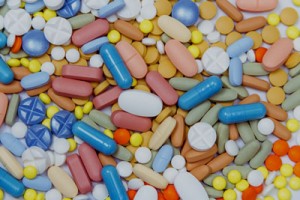 Just fifteen years ago, prescription drug abuse was a minor subject. Even ten years ago, it took a back seat to the routes to addiction we were used to. Alcohol and marijuana were the primary channels to addiction, not pills.
Just fifteen years ago, prescription drug abuse was a minor subject. Even ten years ago, it took a back seat to the routes to addiction we were used to. Alcohol and marijuana were the primary channels to addiction, not pills.
But now, prescription drug abuse is headline news. Many people start their drug use by abusing pills and so many of these people got starting taking pills because of a legitimate prescription for pain.
In a recent Senate Caucus meeting a couple of weeks ago on the subject of prescription drugs there were some strong opinions voiced during that meeting on how pill abuse could be eliminated. One of the speakers of that meeting was Dr. Andrew Kolodny, chief medical officer of Phoenix House, a well known drug rehab organization. He made the statement that our current prescription drug problem had been initiated by the medical profession and with what I have learned recently, I can understand how that could happen. He said that when doctors were trained on how to prescribe painkillers, they were told to prescribe 30 days worth of painkillers in all cases. But if you have been through a typical surgery (not major or extensive) or a tooth extraction, then you know that you really didn’t need 30 days worth of pills. Just a couple of days, maybe a week at the most.
Routinely prescribing 30 days of pills would do a few things that could result in these drugs being abused far too often:
- It would put a lot of drugs in circulation
- If a person didn’t take all the pills, it would mean that there would be a lot of medicine chests with half full bottles of painkillers
- If a person did take all the pills, they could develop a tolerance and dependence on the pills. This means that if they tried to stop, they would go into withdrawal.
All three of these conditions are dangerous. Here’s why:
- Repeat this scenario a few million times across this rather large country of ours and then you can understand how many unneeded pills could be sitting in medicine chests.
- Medicine chests with half full bottles mean that youth, visitors, workmen or anyone could pilfer a few pills when visiting the bathroom. Or, if the bottle is old, maybe take the whole thing with the hope that it would not be missed.
- By the time a person has taken a month’s worth of painkillers (needed or not), he (or she) is liable to go through withdrawal if he discontinues the pills. The sick discomfort and muscle pain of withdrawal may fool this person into thinking he is still in pain and he may ask for more pills. Most doctors are not well trained to spot drug dependence (although this may be starting to change) and may just offer more pills. This has been the unintentional route to addiction for many people.
What Can be Done to Prevent Abuse
If we wanted to completely eliminate prescription drug abuse in this country, a big part of this process would involve doctors. They need to be retrained on how they prescribe and they need to know how to help a person who has become unintentionally dependent on painkillers.
Another part of preventing prescription drug abuse involves getting all these drugs out of the medicine chests. For that, the Drug Enforcement Administration has implemented Drug Take-Back Days. On these days (usually late April with another one in September or October), law enforcement agencies accept prescriptions from the general public. The drugs are then destroyed. Until they started this project in 2010, it was hard to get rid of prescription drugs. You weren’t supposed to flush them down the toilet and other methods of disposal would not necessarily prevent them from being abused by someone who was addicted and desperate.
Drug Take-Back Days have removed a mind-boggling FOUR MILLION POUNDS of prescription drugs from circulation. In the most recent Take-Back Day in April, 390 tons of pills were accepted for destruction.
You can help prevent prescription drug abuse in your own household through the following actions:
- When being prescribed a drug that might be abused, ask your doctor to prescribe a minimum number of pills. Drugs that are likely to be abused include benzodiazepines like Valium or Xanax; painkillers like hydrocodone or oxycodone, sleep aids; muscle relaxants. If you are nervous about still being stressed, unable to sleep or in pain, just ask that to you be allowed to get another prescription if needed when those pills run out.
- Get rid of unused drugs at Drug Take-Back Days. Many cities are also installing dropboxes for unneeded drugs. Some of them look like old mailboxes or overnight service boxes. These can be used any time.
- Lock up pills. Get a locking box at a hardware or office supply store and lock them up every time. Some young people take drugs from a sick or recently-deceased relative’s supply. Don’t think that it would never happen – it does so just prevent it.
These are powerful drugs and we can tend to forget that. They must be handled with care because they are quickly (almost immediately, in fact) addictive for some people. Just by making it harder for people to get their hands on pills, you could prevent someone’s addiction.